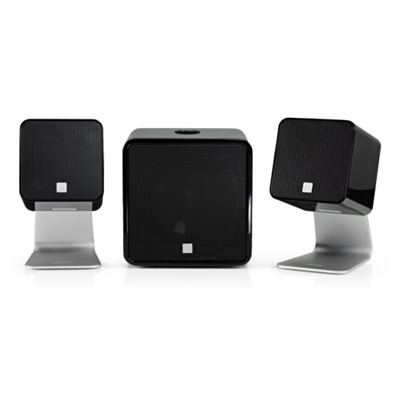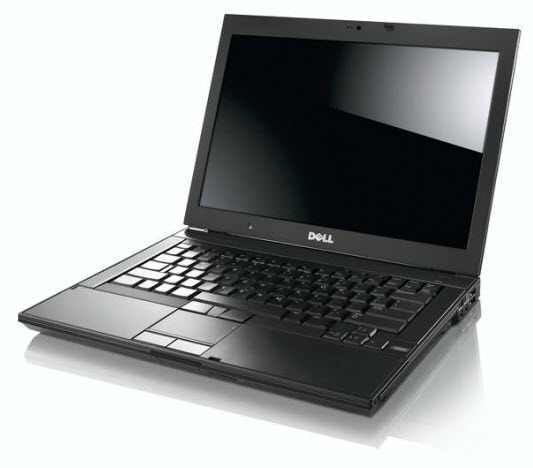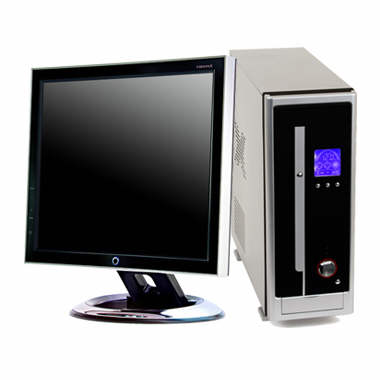Tag Archives: computer accessories
PC Troubleshooting Tips
Nothing can put a damper on productivity quite like a computer that crashes on a regular basis. Sometimes, a crash is preceded by the dreaded “blue screen of death” or another warning; other times, a computer simply shuts off without any warning at all. In either case, the end result is a whole lot of frustration, aggravation and lost work. If your computer has been crashing frequently, you’d probably like to put an end to it. Unfortunately, getting to the bottom of things if often easier said than done. The following tips about improving your computer’s performance, though, are excellent places to begin.
Possibility #1: Corrupted System Registry Files
Every Windows-based PC has something called a Windows registry. The registry contains several files that are integral to the performance and operation of your computer. Over time, some of those files can become corrupted, be misplaced or get lost altogether. When that happens, the system registry becomes compromised – and frequent crashes are all-too-common symptoms. The best way to rule this possibility in or out is by running a Windows registry cleaning program. Such programs scan your Windows registry for problems then automatically make repairs. If you run a registry cleaner and the crashes persist, they are probably being caused by a different issue.
Possibility #2: Disorganized Files
Windows operating systems handle file organization in a way that isn’t very intuitive. Basically, they break files up and fit them into gaps in the computer’s memory. As time goes by, these disorganized files can prompt frequent crashes. Luckily, a great optimization solution is built right into Windows-based PCs: the disk defragmentation utility. Although its location on a computer varies, you can generally locate it within the System and Security section inside the Control Panel. By running a defrag once every few months, you may be able to keep those pesky computer crashes at bay.
Possibility #3: Malicious Software
Malicious software can take many different forms. Sometimes, it’s a virus that is accidentally unleashed after opening a strange email; other times, its adware that tags along with other information that is automatically downloaded from a website. Whatever type it is, there’s no question that malicious software can wreak havoc on a computer’s performance. Happily, there are many topnotch programs out there that regularly scan your computer for the presence of such problems – and that help guard against them, too. Buy one, install it and use it regularly; your crash issues may come to an end.
Possibility #4: Too Little Available Memory
When you buy a new computer, it feels like there’s no end to the amount of memory that it has. Of course, this isn’t true at all. As never-ending as the available memory on your PC may initially seem, the fact is that it can be depleted with incredible speed. You can find out for sure by checking the information within “My Computer.” If it appears that your available memory is low, you can use a PC cleanup program to remove unnecessary files; such programs remove things like temporary Internet files and other file debris that can suck away much-needed memory.
Possibility #5: Overheating
If you’ve run through all of the preceding possibilities and continue experiencing frequent crashes, a hardware issue could be to blame. An easy one to rule out is overheating. A computer’s CPU, or central processing unit, includes a fan that is designed to keep it running cool. Sometimes, the fan wears down and doesn’t work as efficiently; other times, it’s just not able to handle the work that your computer has to do. In either case, buying a bigger, better fan isn’t very expensive. If it puts an end to your PC crashing problem, it will have been more than worth it.
Don’t Put Up with Frequent Crashes!
As discussed, frequent computer crashes can be triggered by a wide variety of issues. Luckily, many of these issues are relatively easy to remedy. Work your way through the preceding list; chances are, you’ll be able to pinpoint the problem and put an effective cure to work. Nine times out of ten, a computer simply needs a little bit of routine maintenance to get it back on track again. In the future, keep these points in mind. Any time you buy a new computer, keep up with its basic maintenance right from the get-go. By doing that, you could avoid “blue screen of death” and crashing problems altogether – and that’s something that you’re bound to appreciate!

How Often Should You Shut Down Your Computer?
All sorts of factors must be considered, such as how much power your computer draws vs. how much your electric utility charges per kilowatt hour; how important it is to you that you have immediate access to your computer at all times; and on and on. Essentially, it boils down to your own personal preference. Here are some things to consider:
Electricity Costs
At a basic level, an average computer uses about 350W of power (including the monitor) or 0.35 kW. (This can vary depending on the size of your machine, what you use it for, etc.) Figure out how much your local utility charges per kilowatt hour, and then do the math to see how much electricity your machine would consume if left on all day. Rates fluctuate based on your city and the time of year, but for the sake of argument, if the utility charges 10 cents per kWh, then it’s costing you roughly $25 per month to run the machine all day. So, unless you’re hopped up on Red Bull and computing constantly, shut it down each night.
Wear and Tear
Computer parts are designed to be extremely durable and last for years, but as with all machines that have moving parts, things do eventually break down. In a PC, the cooling fans (for the power supply and the CPU) are the primary components that will be in constant use if you never turn the machine off. The fans don’t have to work as hard if the computer is in sleep mode or is not actively running several programs while still powered up, but eventually they’re likely going to give out and will need to be repaired or replaced. Hard drives also continue to spin when the computer is not in use, and it can eventually peter out, too.
Too Many Processes
If you leave your computer on all the time, it is still running all manner of processes, even if no programs are open. Over time, these processes lead to memory errors that constantly build up, which can cause crashes, programs to freeze, and operating system lag. Shutting down your computer when it’s not in use can help limit that kind of poor performance, along with periodic sweeps with antivirus/malware software.
The bottom line? To save energy and give your computer a longer lifespan, shut it down when you’re not using it.
(Source: Computer Tips)
Make a LEGO Robot With a Raspberry Pi
LEGO fans can create their own programmable robot with a new device that works with the Raspberry Pi computer.
If you have a Raspberry Pi, the BrickPi system lets you convert the tiny PC into a LEGO robot, as explained in the video above. Raspberry Pi is a credit-card sized, Linux-based PC that arrived in the U.S. earlier this year.
The BrickPi system includes a board that slides over your Raspberry Pi and a plastic case that connects LEGO pieces. Once you attach a 9-volt battery, you can hook up LEGO motors (three ports) and sensors (four ports), connect some USB gadgets (e.g. webcam, WiFi, keyboard, mouse), load an example program and start modifying and hacking.
The Raspberry Pi controls the motors and sensors, and you can program using Python libraries. Additionally, the BrickPi’s firmware is hackable, since it’s open-source Arduino. (Source: Mashable)
We Sell Used Computers and Laptops
Computer Accessories
Leap Motion Control Coming to HP Devices
 Leap Motion Tuesday announced a partnership with Hewlett-Packard to bring the startup’s motion-control technology to HP devices.
Leap Motion Tuesday announced a partnership with Hewlett-Packard to bring the startup’s motion-control technology to HP devices.
While the announcement didn’t say what kinds of devices would be have Leap’s technology built-in, it’s a fair guess that it would include Windows 8 PCs. Any machine with the Leap controller embedded will also include Airspace, Leap Motion’s app store, pre-loaded. Full article
How to Quickly Rename Multiple Files in Windows
 Rename multiple files in Microsoft Windows XP Explorer by following the below steps.
Rename multiple files in Microsoft Windows XP Explorer by following the below steps.
- Open Explorer.
- In Explorer select all the files you wish to rename.
- Once the files have been selected press F2 and type the new name for the files. For example, typing “test” will rename the files to test, test(1), test(2), test(3) etc. If you have show file extensions enabled, make sure to also type the name of the file extension you’re renaming.
If you need each of the files renamed as a different name, you can also quickly go through files by following the below steps.
- Highlight the first file and press the F2 key.
- This will open the rename for the highlighted file. After the file has been renamed press the tab key to go to the next file.
Finally, if the above suggestions don’t help or you need a more powerful tool for renaming multiple files in Windows we suggest the Bulk Rename Utility. (source: Computer Hope)
General Computer Cleaning Tips
Below is a listing of general tips that should be taken when cleaning any of the components or peripherals of a computer as well as tips to help keep a computer clean.
- Never spray or squirt any liquid onto any computer component. If a spray is needed, spray the liquid onto a cloth and then use that cloth to rub down the component.
- You can use a vacuum to suck up dirt, dust, or hair around the computer on the outside case. However, do not use a vacuum for the inside of your computer as it generates a lot of static electricity that can damage the internal components of your computer. If you need to use a vacuum to clean the inside of your computer, use a portable battery powered vacuum designed to do this job or try using compressed air.
- When cleaning a component or the computer, turn it off before cleaning.
- Be cautious when using any cleaning solvents; some individuals may have allergic reactions to chemicals in cleaning solvents and some solvents can even damage the case. Try to always use water or a highly diluted solvent.
- When cleaning, be careful not to accidentally adjust any knobs or controls. In addition, when cleaning the back of the computer, if anything is plugged in, make sure not to disconnect any of the plugs.
- When cleaning fans, especially the smaller fans within a portable computer or laptop it’s suggested that you either hold the fan or place something in-between the fan blades to prevent it from spinning. Spraying compressed air into a fan or cleaning a fan with a vacuum may cause damage or back voltage to be generated.
- Never eat or drink around the computer.
- Limit smoking around the computer.
Although many companies have created products to help improve the process of cleaning your computer and peripherals, users can also use household items to clean their computers and peripherals. Below is a listing of items you may need or want to use while cleaning your computer or computer peripherals.
Keep in mind that some components in your computer may only be able to be cleaned using a product designed for cleaning that component; if this is the case, it will be mentioned in the cleaning tips.
- Cloth – A cloth is the best tool used when rubbing down a component; although paper towels can be used with most hardware, we recommend using a cloth when ever possible. Caution: We only suggest you use a cloth when cleaning components such as the outside of the case, a drive, mouse, etc. You should not use a cloth to clean any circuitry such as the RAM or motherboard since they can generate ESD that can damage electronics.
- Water or rubbing alcohol – When moistening a cloth, it is best to use water or rubbing alcohol. Other solvents may be bad for the plastics used with your computer.
- Portable Vacuum – Sucking the dust, dirt, hair, cigarette particles, and other particles out of a computer can be one of the best methods of cleaning a computer. Over time, these items can restrict the airflow in a computer and cause circuitry to corrode. Do not use a standard vacuum as it can generate a lot of static electricity that can damage your computer.
- Cotton swabs – Cotton swaps moistened with rubbing alcohol or water are excellent tools for wiping hard to reach areas in your keyboard, mouse, and other locations.
- Foam swabs – Whenever possible, it is better to use lint-free swabs such as foam swabs. (source: Computer Hope)





